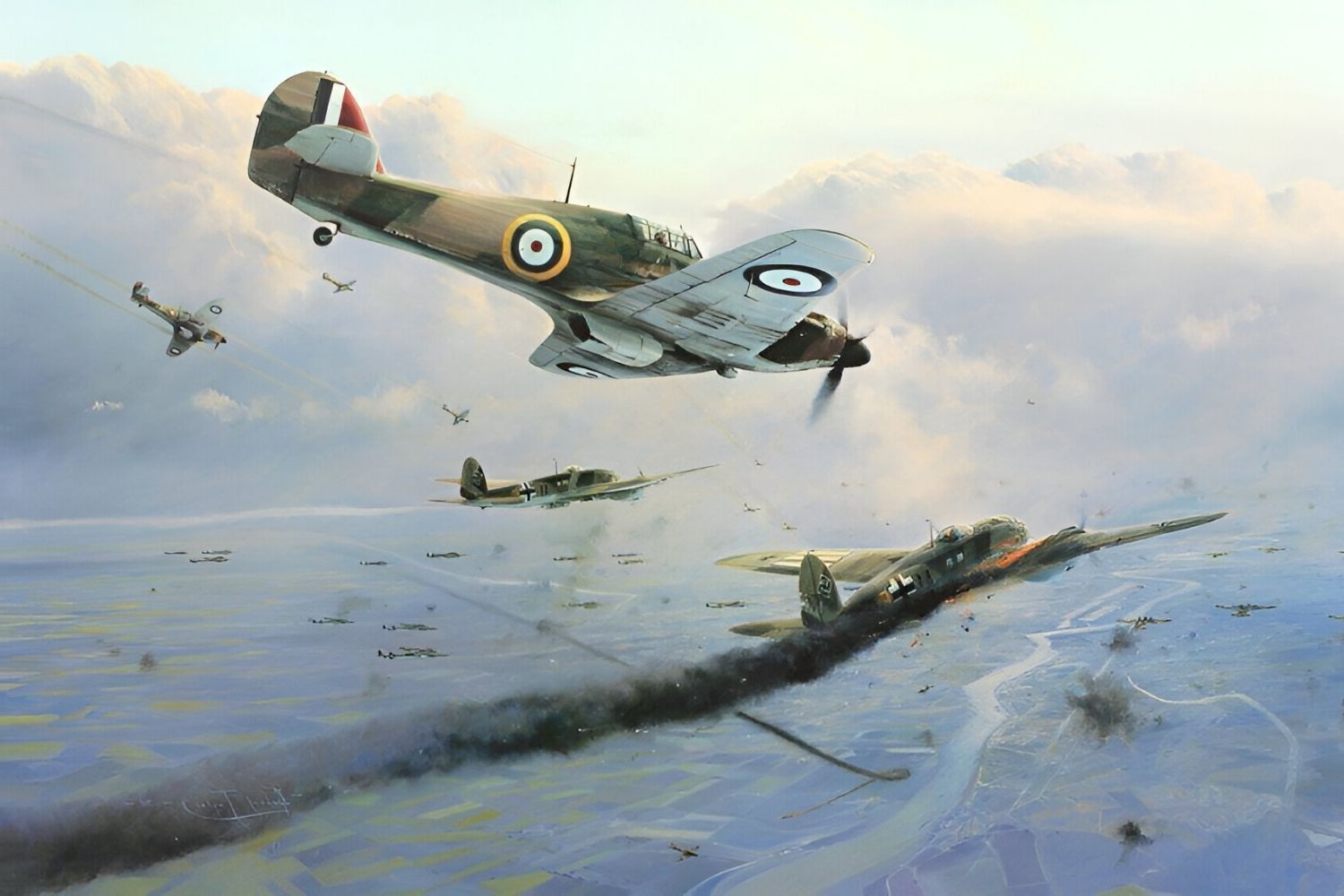
Did you know that the Air Battle Over Merklín was a pivotal moment in World War II? This intense aerial conflict took place over the small village of Merklín in the Czech Republic. The battle occurred on April 25, 1945, just days before the war in Europe ended. Allied forces clashed with the German Luftwaffe in a desperate struggle for air superiority. The skies were filled with the roar of engines and the crackle of gunfire as pilots maneuvered their planes in daring dogfights. This battle not only showcased the bravery of the pilots but also highlighted the strategic importance of air power in the final days of the war. Join us as we uncover 25 fascinating facts about this historic event that shaped the course of history.
Key Takeaways:
- The air battle over Merklín in 1945 involved US and German forces, impacting the local community and leaving a lasting legacy of remembrance and study.
- The battle featured iconic aircraft and tactics, causing damage to the village and prompting annual commemorations, reflecting the enduring impact of World War II.
The Setting of the Air Battle Over Merklín
The air battle over Merklín, a small village in the Czech Republic, was a significant event during World War II. This clash between Allied and Axis forces left a lasting impact on the region and its history.
- Merklín is located in the Karlovy Vary Region of the Czech Republic, near the German border.
- The battle took place on April 25, 1945, just two weeks before the end of World War II in Europe.
- Allied forces involved in the battle were primarily from the United States Army Air Forces (USAAF).
- German Luftwaffe pilots defended the area, attempting to repel the Allied assault.
Key Players in the Battle
Understanding the main participants provides insight into the strategies and outcomes of the air battle over Merklín.
- The USAAF's 8th Air Force played a crucial role in the battle, known for its strategic bombing campaigns over Europe.
- German forces included experienced Luftwaffe pilots flying Messerschmitt Bf 109 and Focke-Wulf Fw 190 aircraft.
- Major John C. Meyer, a notable USAAF pilot, led the American forces during the battle.
- German ace pilot Oberleutnant Walter Schuck was among the defenders, credited with numerous aerial victories.
Aircraft Used in the Battle
The types of aircraft used in the battle significantly influenced its dynamics and outcome.
- The USAAF deployed P-51 Mustang fighters, known for their speed and agility.
- B-17 Flying Fortress bombers provided heavy firepower and played a key role in the Allied strategy.
- German pilots flew the Messerschmitt Bf 109, a versatile and widely-used fighter aircraft.
- The Focke-Wulf Fw 190, another German fighter, was renowned for its powerful engine and robust design.
Tactics and Strategies
Both sides employed various tactics and strategies to gain the upper hand in the battle.
- The USAAF used a combination of high-altitude bombing and low-level strafing runs to target German positions.
- German pilots relied on hit-and-run tactics, using their superior knowledge of the terrain to their advantage.
- The Allies aimed to disrupt German supply lines and weaken their defensive capabilities.
- German forces focused on protecting key infrastructure and repelling the Allied advance.
Impact on the Local Population
The air battle over Merklín had a profound effect on the local population and the surrounding area.
- Many residents of Merklín were forced to evacuate their homes due to the intense fighting.
- The battle caused significant damage to buildings and infrastructure in the village.
- Local resistance fighters provided valuable intelligence to the Allied forces, aiding their efforts.
- The aftermath of the battle saw a surge in humanitarian aid to help rebuild the community.
Legacy of the Battle
The legacy of the air battle over Merklín continues to be remembered and studied today.
- The battle is commemorated annually in Merklín with ceremonies and events honoring those who fought.
- Several monuments and memorials have been erected in the village to preserve the history of the battle.
- The battle is a subject of study for military historians, providing insights into air combat tactics and strategies.
- Personal accounts from veterans and local residents offer a unique perspective on the events of April 25, 1945.
- The air battle over Merklín serves as a reminder of the sacrifices made during World War II and the enduring impact of the conflict on communities worldwide.
Final Glimpse at the Air Battle Over Merklín
The Air Battle Over Merklín remains a significant event in World War II history. This clash showcased the bravery, strategy, and technological advancements of the time. Pilots faced immense challenges, from dodging enemy fire to navigating treacherous skies. The battle's outcome influenced subsequent military tactics and highlighted the importance of air superiority. Remembering these facts helps us appreciate the sacrifices made and the lessons learned. History enthusiasts and scholars alike find value in studying such pivotal moments. The Air Battle Over Merklín serves as a reminder of the resilience and determination of those who fought. By understanding these events, we gain a deeper appreciation for the complexities of war and the enduring human spirit.
Frequently Asked Questions
Was this page helpful?
Our commitment to delivering trustworthy and engaging content is at the heart of what we do. Each fact on our site is contributed by real users like you, bringing a wealth of diverse insights and information. To ensure the highest standards of accuracy and reliability, our dedicated editors meticulously review each submission. This process guarantees that the facts we share are not only fascinating but also credible. Trust in our commitment to quality and authenticity as you explore and learn with us.
